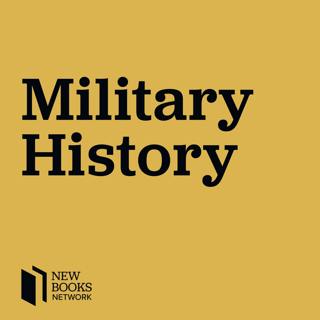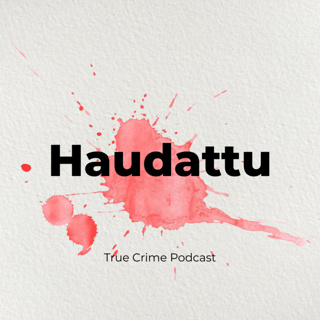
Gary Kulik, “War Stories: False Atrocity Tales, Swift Boaters, and Winter Soldiers” (Potomac Books, 2009)
One often hears stories of World War II and Korean War veterans who came back from the war and refused to talk about what they had experienced in combat. They neither wanted folks at home to know what had happened nor did they want to relive it themselves. It was just too horrible to relate. The truth about combat in those conflicts, so we are told, was therefore suppressed. In Vietnam, the truth was also suppressed, but in a different way and for altogether different reasons. As Gary Kulik demonstrates in his remarkable book ‘War Stories’: False Atrocity Tales, Swift Boaters, and Winter Soldiers–What Really Happened in Vietnam (Potomac Books, 2009), some Vietnam veterans came back from the war and, far from hesitating to tell their “war stories,” exaggerated and even invented them. This was particularly true of atrocity tales, which were both numerous and well broadcast. As Kulik explains, the point of these false atrocity stories was not to portray the “grunts” in a bad light. On the contrary, the tellers of the tales portrayed themselves–with the aid of the anti-war media and what might be called the anti-war psychological establishment–as victims. Victims of what? The ‘American War Machine’ (my phrase, not Kulik’s)– a monstrous, immoral creation that ground vast quantities of men and material–American and Vietnamese–into dust for no good purpose. The ‘American War Machine,’ so Americans were told in the Winter Soldiers’ testimony, in a huge memoir literature, and in blockbuster films, produced atrocities that then in turn produced the broken, lost, and possibly insane Vietnam vet of popular folk memory. Think John Rambo or Travis Bickle. Kulik’s point is not that American soldiers committed no atrocities in Vietnam. They did, and they were too many of them. Nor is it to claim that American soldiers were not, in some cases, badly traumatized by their Vietnam experience. Some were, and too many of them. His argument is that the truth about Vietnam–that it was basically a war like others Americans have fought in the twentieth century, not one that produced a flood of atrocities and psychologically wounded soldiers–has been suppressed by those who wanted to tell politically-charged “war stories.” Learn more about your ad choices. Visit megaphone.fm/adchoices Support our show by becoming a premium member! https://newbooksnetwork.supportingcast.fm/military-history
15 Kesä 20171h 10min

Andrew Boyd, “The Royal Navy in Eastern Waters: The Linchpin of Victory, 1935-1942” (Seaforth Publishing, 2017)
In the 1930s the Royal Navy faced the problem of defending its empire in eastern Asia and Australia against the formidable naval power of Japan. How they responded to this threat in the final years of peace and the first years of the Second World War, is the subject of Andrew Boyd‘s book The Royal Navy in Eastern Waters: The Linchpin of Victory, 1935-1942 (Seaforth Publishing, 2017; distributed in the US by Naval Institute Press). As Boyd explains, the challenge was one of defending British interests against a modern fleet that was qualitatively the equal of theirs. Efforts to implement a strategy, though, were disrupted by the growing threat of war in Europe, and the fall of France in the summer of 1940 forced the British to reassess their strategic assumptions. The growing priority the British gave to their interests in the Mediterranean and the Middle East during this time came at the expense of their preparations against Japan, leading the British to seek greater cooperation with the United States and others to protect their possessions in the region. Though these attempts to establish an effective defense were incomplete when the Japanese onslaught came at the end of 1941, Boyd shows how the planning and preparation for it laid the groundwork for the successful defense of the Indian Ocean region, which ultimately proved strategically vital to Allied efforts to defeat the Axis powers. Learn more about your ad choices. Visit megaphone.fm/adchoices Support our show by becoming a premium member! https://newbooksnetwork.supportingcast.fm/military-history
14 Kesä 20171h 27min

John P. Langellier, “Fighting for Uncle Sam: Buffalo Soldiers in the Frontier Army” (Schiffer, 2016)
From the American Revolution to the present day, African Americans have stepped forward in their nation’s defense. Fighting for Uncle Sam: Buffalo Solders in the Frontier Army (Schiffer, 2016) breathes new vitality into a stirring subject, emphasizing the role men who have come to be known as “buffalo soldiers” played in opening the Trans-Mississippi West. This concise overview reveals a cast of characters as big as the land they served. Over 150 images painstakingly gathered nearly a half century from public and private collections enhance the written word as windows to the past. Now 150 years after Congress authorized blacks to serve in the Regular Army, the reader literally can peer into the eyes of formerly enslaved men who bravely bought their freedom on the bloody battlefields of the Civil War, then trekked westward, carried the “Stars and Stripes” to the Caribbean, and pursued Pancho Villa into Mexico with John “Black Jack” Pershing. Growing up in Tucson, Arizona, historian and author John P. Langellier spent four decades working in public history after earning a B.A. and M.A. in history from the University of San Diego and his Ph.D. in military history from Kansas State University. He spent a dozen years with the U.S. Army, helped found California’s Autry Museum of the American West, and served as director for Wyoming State Museum, deputy director of the Ronald Reagan Presidential Library, executive director of Arizona’s Sharlot Hall Museum, and director of Arizona Historical Society’s Central Division. He was also awarded an honorary membership into the 9th and 10th U.S. Horse Calvary Association. He has written dozens of published books, served as a Hollywood film consultant, a Smithsonian Institution fellow, and produced history documentaries for television networks A&E, History, and PBS. Langellier officially “retired” to Tucson in 2015, but still continues his work as one of the preeminent military historians in the United States. After Fighting for Uncle Sam: Blacks in the Frontier Army, one of his current research projects is a book-length work on the connections between the Western art of Frederic Remington and the U.S. Army 10th Calvary (Buffalo Soldiers) in Arizona. James Stancil is an independent scholar, freelance journalist, and the President and CEO of Intellect U Well, Inc. a Houston-area non-profit dedicated to increasing the joy of reading and media literacy in young people. Learn more about your ad choices. Visit megaphone.fm/adchoices Support our show by becoming a premium member! https://newbooksnetwork.supportingcast.fm/military-history
8 Kesä 201758min

Patrick J. Hayes, “The Civil War Diary of Rev. James Sheeran, Confederate Chaplain and Redemptorist” (Catholic Univ. of America Press, 2016)
During the Civil War Father James Sheeran served as a Catholic chaplain for the 14th Louisiana Infantry. Between his various responsibilities Sheeran kept a journal in which he recounted his experiences with, and observations of, life in the Army of Northern Virginia. As editor of The Civil War Diary of Rev. James Sheeran, Chaplain, Confederate, Redemptorist (Catholic University of America Press, 2016), Patrick J. Hayes has provided readers with the most complete edition yet of Sheeran’s manuscript, one that details the activities of a man of faith in a time of war. An immigrant from Ireland, Sheeran joined the Redemptorist congregation in the 1850s and was serving as a parish priest in New Orleans when the war began in 1861. As a military chaplain, Sheeran witnessed firsthand many of the key battles of the Civil War, from Second Manassas in 1862 to Cedar Creek in 1864, and his recorded observations provide a valuable record of those clashes. Yet Sheeran’s diaries also serve as a window into what life was like for soldiers and civilians during the conflict, as observed by a man whose commitment to the Confederate cause was matched only by his piety. Learn more about your ad choices. Visit megaphone.fm/adchoices Support our show by becoming a premium member! https://newbooksnetwork.supportingcast.fm/military-history
23 Touko 201758min

Michael Bryant,” A World History of War Crimes: From Antiquity to the Present,” (Bloomsbury, 2016)
Michael Bryant’s book is both less and more ambitious than its title. He’s writing less of a history of war crimes than he is a history of the idea and concept of war crimes. He’s most interested in what people have considered a breach of the norms of warfare and how this concept has changed over time. The triumph of A World History of War Crimes: From Antiquity to the Present (Bloomsbury, 2016) is it’s reminder that, while expectations about how soldiers (and others) would act during warfare are not new at all, the notion of war crimes is actually quite recent. Bryant argues that ideas about the proper conduct of war go back to the ancient Near East. But these ideas were rarely based on the dignity of human person. Instead they derived from religion or from the shape of the political institutions in society. It was only in the 18th and 19th century, in the aftermath of the Enlightenment, that norms about conduct during warfare began to be based on the idea that mistreating civilians or wounded soldiers was a crime. And even then, these notions were activated through bilateral or multilateral treaties–implying that the recognition of human dignity had very real limits. It’s an audacious task to attempt to survey the history of war crimes, especially a global history. Meant as a textbook, Bryant inevitably privileges European history. But it’s a thoughtful, well-written, provocative survey, exactly what we hope for in a textbook. Kelly McFall is Associate Professor of History at Newman University in Wichita, Kansas, where he directs the Honors Program. He is particularly interested in the question of how to teach about the history of genocides and mass atrocities and has written a module in the Reacting to the Past series about the UN debate over whether to intervene in Rwanda in 1994. Learn more about your ad choices. Visit megaphone.fm/adchoices Support our show by becoming a premium member! https://newbooksnetwork.supportingcast.fm/military-history
18 Touko 20171h 14min

Steve Dunn, “Securing the Narrow Sea: The Dover Patrol, 1914-1918” (Seaforth/US Naval Institute, 2017)
Most accounts about the naval battles of the First World War focus upon the stalemate between the British Grand Fleet and the German High Seas Fleet, or the German raiders who attempted to disrupt Allied commerce. In Securing the Narrow Sea: The Dover Patrol 1914-1918 (Seaforth Publishing, 2017; distributed in the US by Naval Institute Press), Steve Dunn focuses on the often overlooked service of the British naval forces stationed in the English Channel during the conflict. The eclectic collection of destroyers, converted yachts, and requisitioned trawlers that comprised the patrol made for a considerable contrast with the dreadnoughts at Scapa Flow, yet, as Dunn demonstrates, they played a vital role in securing the Channel for the safe transport of British troops to France and in opposing the transit of German U-boats to their stations. In describing the admirals who commanded the station over the course of the war, the lives of the men who served aboard the ships, and the various engagements which they fought against their German opponents, he explains the unglamorous yet frequently dangerous contribution the patrol made to Britain’s victory over Germany in 1918, one that was subsequently glossed over in the postwar era. Learn more about your ad choices. Visit megaphone.fm/adchoices Support our show by becoming a premium member! https://newbooksnetwork.supportingcast.fm/military-history
15 Touko 201746min

Lynn Dumenil, “The Second Line of Defense: American Women and World War I” (UNC Press, 2017)
When America went to war against Germany in 1917, the scale of the conflict required the mobilization of women as well as men in order to achieve victory. In The Second Line of Defense: American Women and World War I (University of North Carolina Press, 2017), Lynn Dumenil describes the many ways in which women participated in the war effort and the ways in which it transformed their lives. As she notes, in the years leading up to the war increasing numbers of American women were employed outside the home and involved in the public sphere. For many the politically-engaged among their number, the decision to go to war presented an opportunity to demonstrate their gender’s patriotism and worthiness for the vote. Thousands showed their support for the soldiers by participating in a variety of volunteer activities, with some even traveling to Europe to work in canteens or as nurses. Many more took up the jobs that the men left behind, filling the void created by their enlistment. These efforts were celebrated in the popular media of the time, though often with the message that these new roles were only temporary. Yet as Dumenil demonstrates, while postwar gains were indeed limited, the involvement of women in the war accelerated many of the changes taking place in politics and society, changes which were reflected in new attitudes and expectations held by these women in the 1920s and beyond. Learn more about your ad choices. Visit megaphone.fm/adchoices Support our show by becoming a premium member! https://newbooksnetwork.supportingcast.fm/military-history
18 Huhti 201748min

Phil Gurski, “Western Foreign Fighters: The Threat to Homeland and International Security” (Rowman and Littlefield, 2016)
Phil Gurski‘s Western Foreign Fighters: The Threat to Homeland and International Security (Rowman and Littlefield, 2016) is his second recent monograph on terrorism, and another useful resource for practitioners and non-specialists alike. Written in an approachable, grounded style, Western Foreign Fighters is both topical and novel; its comparative analysis of volunteers’ participation in non-sanctioned conflicts both jihadist and secular is especially notable. Gurski’s measured, thoughtful analysis is a credit to the Canadian intelligence community (wherein he spent his entire career) and I look forward to his further publications. Learn more about your ad choices. Visit megaphone.fm/adchoices Support our show by becoming a premium member! https://newbooksnetwork.supportingcast.fm/military-history
17 Huhti 201753min





















